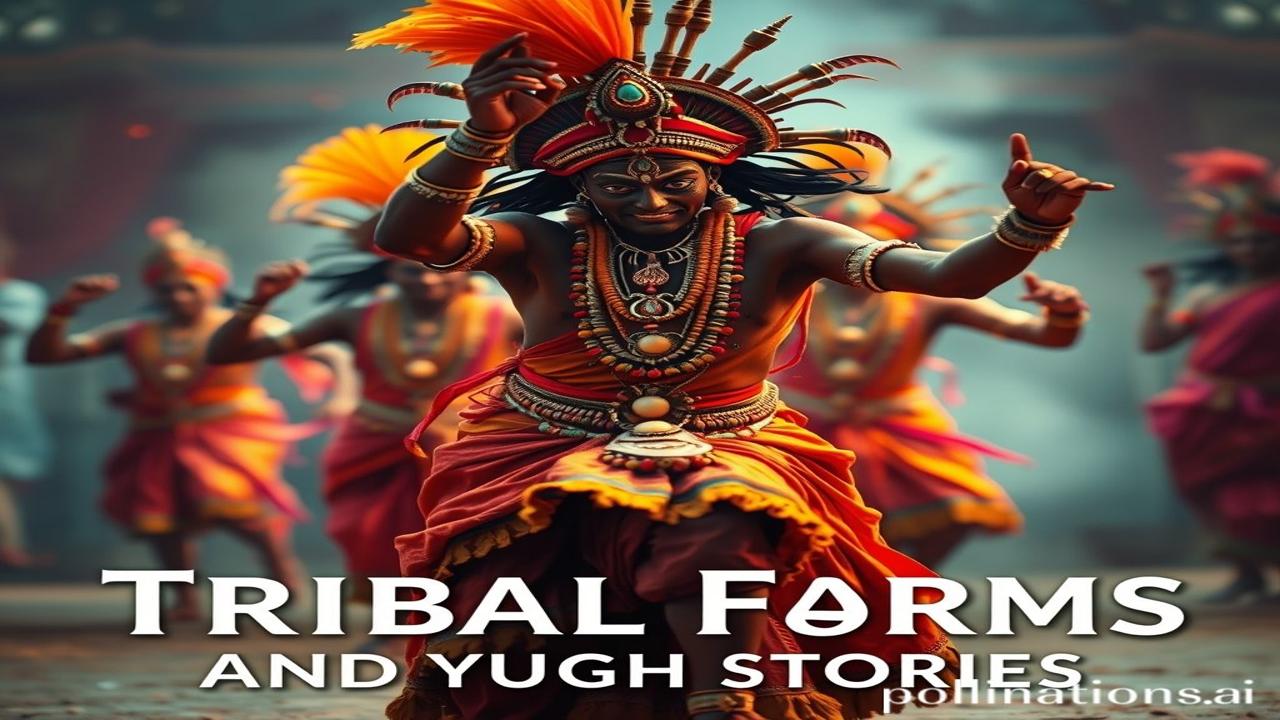Waqt Ki Dhool Mein Raqs: Unveiling The Stories of Tribal Dance Forms
Kabhi socha hai, agar hum apni jadoon se lipat jaayein toh kitni kahaniyan humein aakar gale laga lengi? Waqt ki dhool mein, kuch aisi hi kahaniyan chhipi hain – Bharat ke aadiwasi nritya roopon ki. Yeh sirf dance nahi hain; yeh jeevan hai, itihaas hai, aur apni pehchaan ko jeevant rakhne ka ek tareeka hai. Come, let’s uncover these vibrant tapestries woven by rhythm and tradition.
Tribal Dance Forms: A Glimpse into Ancient Rhythms
What exactly are these tribal dance forms? Imagine, centuries ago, before grand kingdoms and written histories, people were communicating their joys, sorrows, and everything in between through movement and music. These dances originated as integral parts of tribal life, linked to agriculture, festivals, religious rituals, and even warfare.
These dances aren’t just performances; they’re living chronicles. Most tribal communities reside in forests and remote areas, preserving their unique culture and traditions largely untouched by mainstream society. The dances reflect their deep connection with nature, their ancestors, and their community. They are often passed down through generations, ensuring the survival of their unique cultural identity.
Their importance lies in preserving their history and traditions. Dates are difficult to pinpoint precisely because most knowledge was, and often still is, oral. But many of these dances have existed for centuries, some perhaps even millennia. Tribes like the Gonds, Bhils, Santhals, and many others across India have their own distinct dance forms, each a world in itself.
Zameeni Sach: Log Aur Jeevan – The Heartbeat of the Tribes
Picture this: a group of Gond women, their bodies adorned with vibrant colours and traditional jewelry, gathered around a bonfire under the starlit sky. Their feet move in sync with the beat of the dholak, their voices echoing ancient stories.
“Ma Rukmini ne aaj naye kapde pehne hain, kyunki Gaura Puja hai,” an old woman narrates, her eyes sparkling with memories. The Gaura Puja, a celebration of the goddess of fertility and good harvest, is incomplete without the Karma dance. Young and old alike participate, expressing their gratitude for nature’s bounty and praying for a prosperous future.
Or imagine a group of Santhal warriors, their faces painted with ochre and black, performing the Chhau dance. The energy is palpable as they reenact hunting scenes, their movements a blend of grace and power. Their ancestors fought bravely to protect their lands, and these dances are a testament to their courage and resilience. The Chhau dancer IS the warrior, the hunter, the spirit of the tribe!
Their tools are simple – drums made of animal hide, flutes carved from bamboo, and anklets that jingle with every step. Their clothes, often made of natural fibers and adorned with intricate embroidery, tell stories of their skills and artistry. Their dreams are simple yet profound: a good harvest, healthy livestock, and a strong community.
Dharohar Aur Pehchaan: Echoes of the Past in the Present
Even today, tribal dance forms continue to thrive in various parts of India. They are showcased during festivals, cultural events, and even on international platforms. They are a powerful reminder of India’s rich cultural diversity and the resilience of its tribal communities.
In recent years, there’s been a growing awareness of the importance of preserving these dance forms. Initiatives are being taken to document them, train young dancers, and promote them through cultural tourism. These dances are not just relics of the past; they are a living part of Bharatiyata, a testament to the enduring strength and beauty of Indian culture.
You might even see elements of tribal dance influencing contemporary Indian dance forms or theatrical productions. The raw energy and earthy movements bring a unique authenticity to the stage. These elements serve as reminder that our artistic identity is woven from several fabrics.
Mazedar Tathya Ya Bhram-Bhanjak: Unmasking the Myths
Log samajhte hain ki tribal dances sirf entertainment hai, lekin asli sach yeh hai ki they are so much more. They are a form of storytelling, a way of preserving history, and a means of strengthening community bonds.
Another misconception is that all tribal dances are the same. Each tribe has its own unique dance forms, each with its own distinct rhythm, costumes, and stories. For instance, the Bihu dance of Assam is vastly different from the Kalbelia dance of Rajasthan, both recognized as tribal dances.
Did you know that some tribal dances are believed to have healing powers? The rhythmic movements and chanting are said to channel positive energy, promoting physical and mental well-being.
Drishya Aur Bhavnayein: A Sensory Journey
Imagine the smell of burning wood and incense filling the air. Feel the warmth of the bonfire on your skin. Hear the rhythmic beat of the drums resonating in your soul. The temple walls, adorned with ancient carvings, feel rough and cool to the touch. The sounds of laughter, singing, and the jingle of anklets fill the air, creating a symphony of life.
The air smells of earth and rain. The temple walls are worn smooth by the hands of generations. The dancer’s movements are fluid, powerful, telling the stories of their ancestors.
Antim Vichar Ya Uddharan: Dancing to the Rhythm of Our Roots
Tribal dance forms are not just dances; they are stories told through movement, music, and rhythm. They are a reminder of our connection to nature, our ancestors, and our shared humanity. They are a vibrant tapestry woven from the threads of tradition, resilience, and hope.
“नृत्यं जीवनाधारं, नृत्यं कलात्मकम्।
नृत्यं संस्कृति रक्षा, नृत्यं आनंददायकम्।”
(Dance is the foundation of life, dance is artistic.
Dance is the protector of culture, dance is joyful.)
